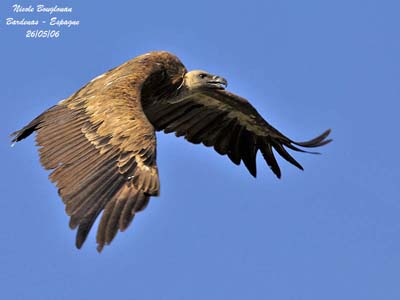
But this wonderful vulture is quite able to live in hard conditions and to survive, if not persecuted as it still occurs in some parts of the range.
I have to say that to see a white downy chick in each nest during my latest stay in Extremadura is an encouraging promise for the species!
Text by Nicole Bouglouan
After my personal observations in Spain (Navarra, Aragon and Extremadura) since spring 2005.
More pictures are available in the following gallery: Birding in Spain
Eurasian Griffon Vulture’s reproduction
This large vulture is a familiar silhouette in our mountains. However, this protected species is still a target for rumours and polemics in some parts of its range, and particularly in France.
Anywhere he does not go unnoticed!

The Eurasian Griffon Vulture’s reproduction lasts several months, actually almost one year, from the late autumn with the aerial displays, to the next fall when the young becomes independent and disperses.
This species starts the breeding season in late autumn, by performing majestic flight displays above the cliffs where they are living.
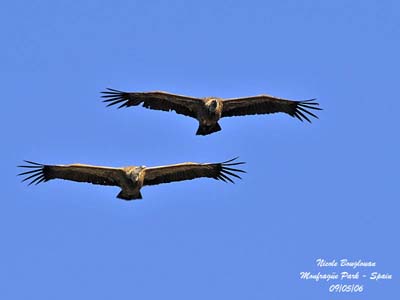
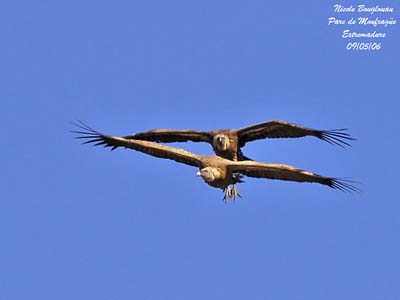
The pair-bonds last all their life, but both mates soar high in the sky, one above the other, inseparable, as joined together.
This display is named “Fly-in-tandem”, and can be regularly observed. Very often, other vultures join the displaying pair, and there are two, four and even six raptors flying together on stiff broadly open wings.
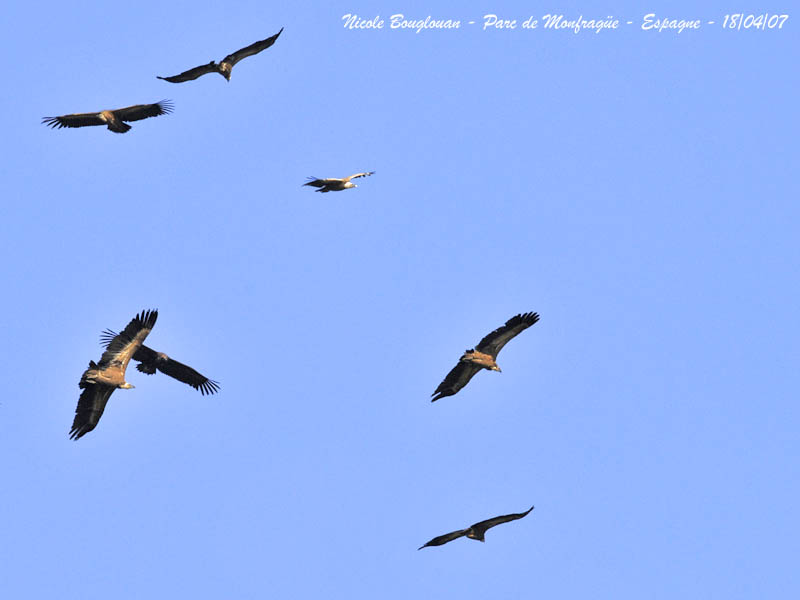
The nest is situated in cliffs on rocky ledges, in the surroundings of the usual perching sites. It is made with sticks and small branches, and the interior cup is lined with softer materials such as moss, grass and wool.
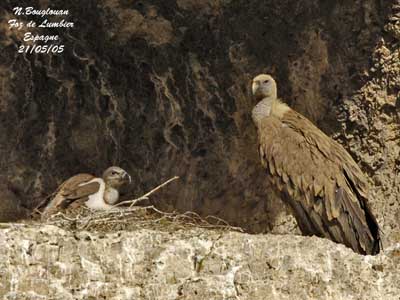
The Eurasian Griffon Vulture breeds in colonies established on cliffs in mountainous areas, and the nests are close to each others.
The female lays only one whitish egg in January, sometimes later, up to April in more recent colonies.
The chick hatches about two months later. It is very weak, with only some down on the body, so small in the large nest.
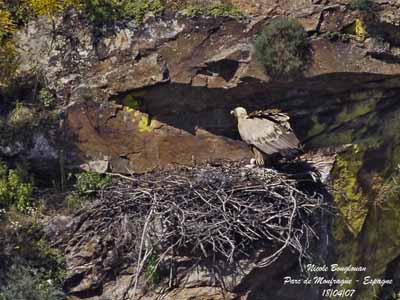
The parents brood it continuously during the first weeks of its life, and feed it by regurgitation. When the weather is rainy, one of the adults protects the chick by opening the wings above the nest.
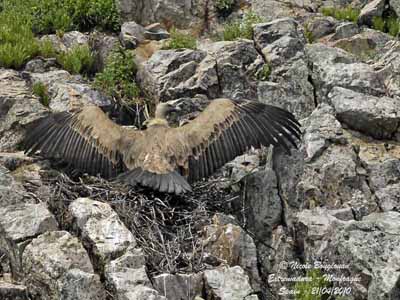
The young grows regularly, and after the first short white down, its body is covered in longer creamy-white or pale grey down.
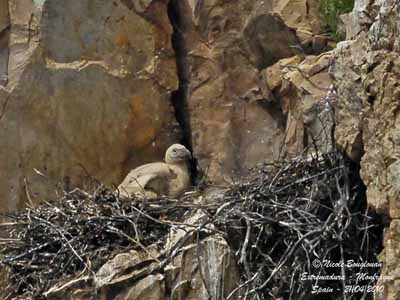
The feathers are growing little by little, and the juvenile fledges about 110-130 days after hatching.
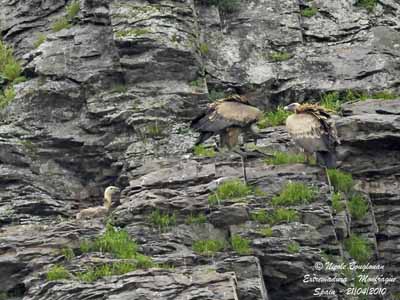
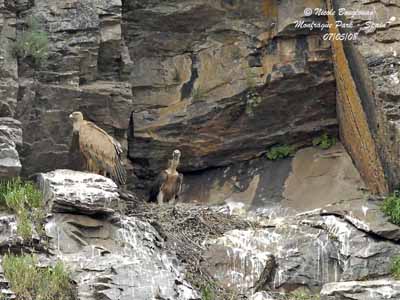
It flaps the wings on the nesting ledge at two months, but it remains at nest up to three or four months, being always fed by both parents.
The juvenile performs its first flight in summer, between July and September. The adults still feed it until the late autumn.
When independent, the young vulture wanders during some years, until it reaches its sexual maturity at 4-5 years old or more. At this moment, it establishes its own territory and breeds.
The breeding success depends on the age of the vultures, but also on the colony. In recent colonies, the nest failures by lost of egg or chick may occur, often due to the lack of experience of the young pairs. The weather conditions with hard winters also play an important role in these failures. However, a new laying may replaces the first until May.
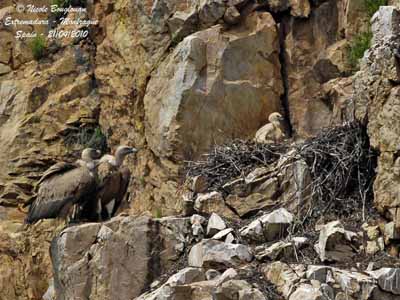
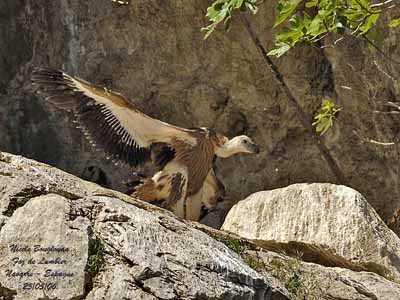
Building or arrangement